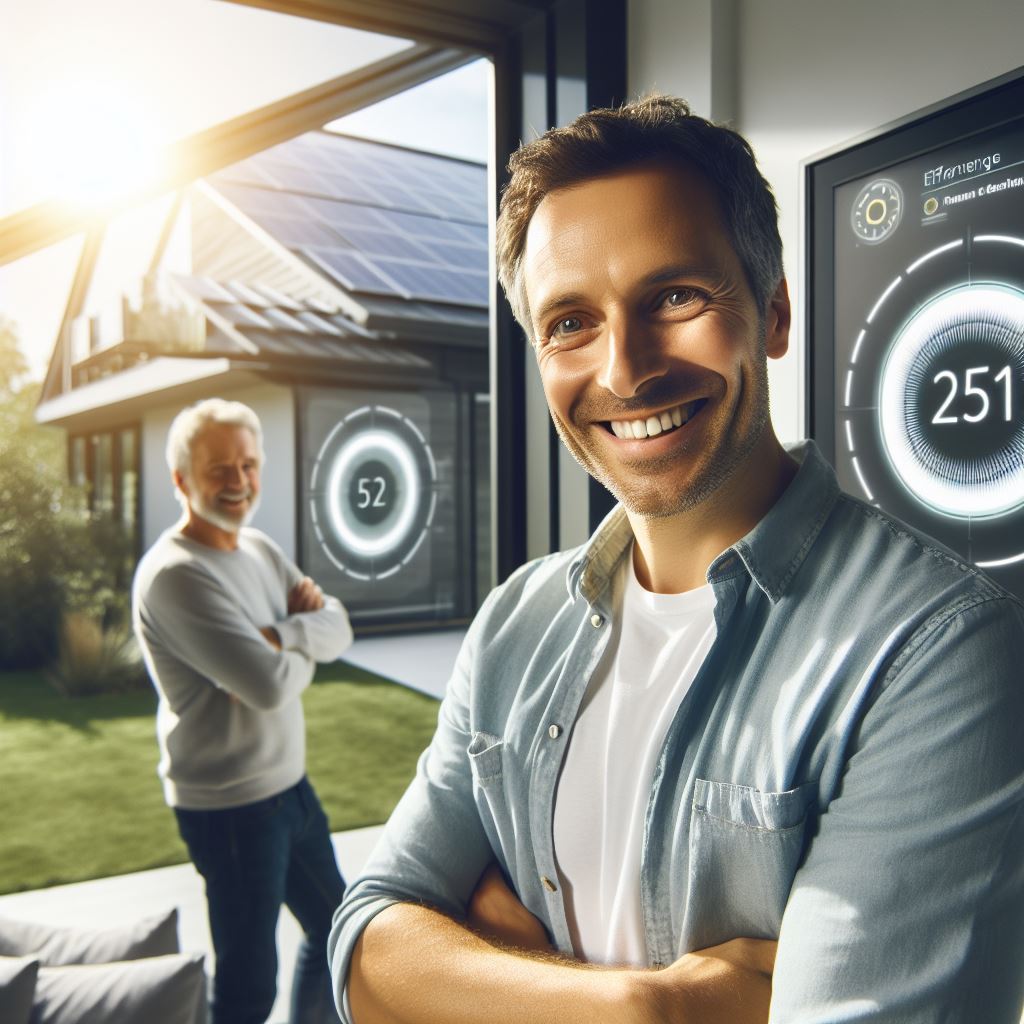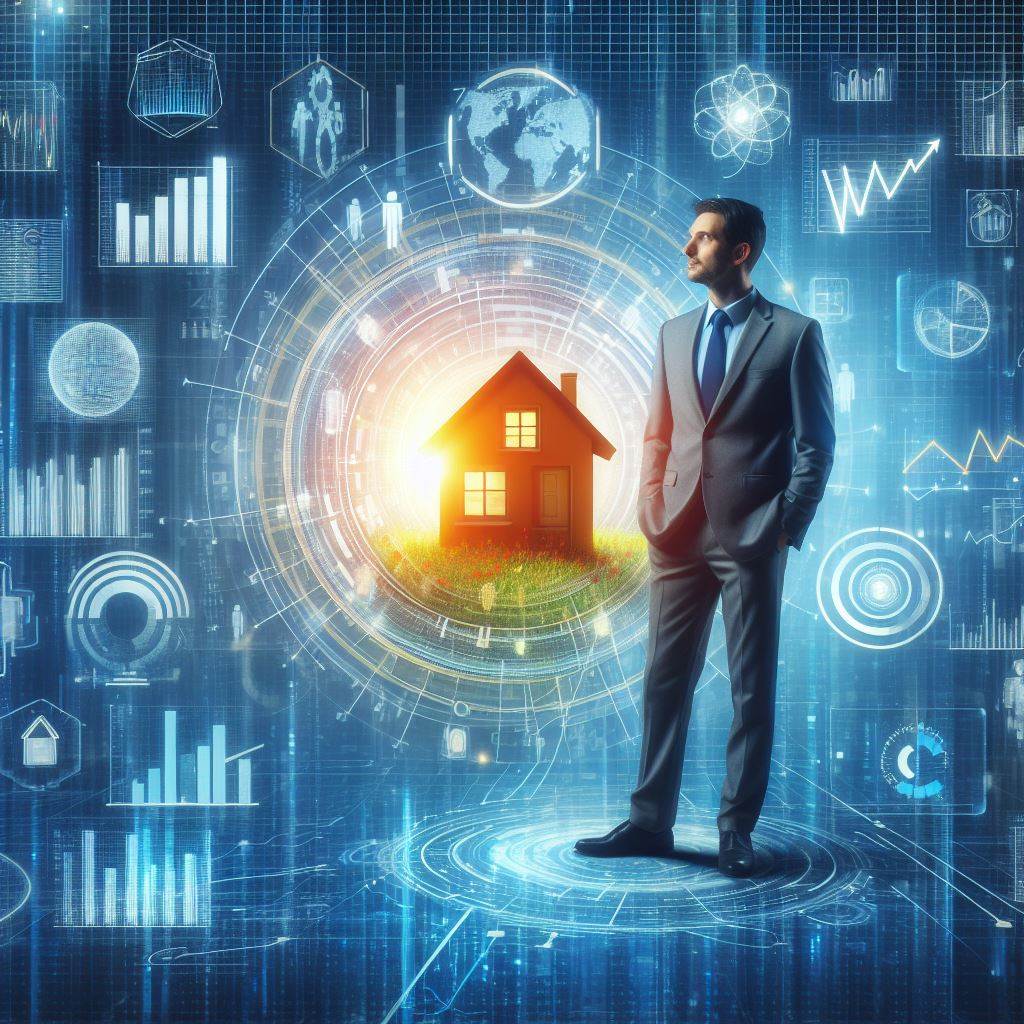Introduction
Energy-saving technology represents a pivotal shift in how homeowners approach energy consumption within their households.
It encompasses a range of innovations and practices geared towards optimizing energy usage, reducing waste, and ultimately, lowering energy bills.
From smart thermostats to energy-efficient appliances, the landscape of home energy management has evolved significantly in recent years, offering homeowners unprecedented control and efficiency in their energy usage.
The importance of embracing energy-saving technology cannot be overstated for homeowners.
Firstly, it presents a tangible opportunity to significantly reduce utility expenses over the long term.
By implementing energy-efficient solutions, homeowners can effectively lower their monthly electricity, gas, and water bills, translating into substantial savings annually.
Moreover, the financial benefits extend beyond immediate cost reductions, as energy-saving measures often contribute to the overall value of the property, enhancing its appeal to potential buyers in the real estate market.
Beyond financial considerations, embracing energy-saving technology carries profound implications for environmental sustainability.
As concerns about climate change intensify, reducing carbon emissions and minimizing ecological footprints have become imperatives for individuals and communities worldwide.
By adopting energy-efficient practices within their homes, homeowners can actively contribute to mitigating environmental degradation, conserving natural resources, and fostering a more sustainable future for generations to come.
Furthermore, energy-saving technology empowers homeowners with greater autonomy and control over their energy consumption patterns.
Through the integration of smart devices and automated systems, individuals can monitor and manage their energy usage in real-time, identifying areas of inefficiency and implementing targeted solutions to optimize performance.
This level of insight and flexibility not only enhances the overall comfort and convenience of the home environment but also cultivates a sense of empowerment and responsibility towards sustainable living practices.
In summary, energy-saving technology represents a win-win proposition for homeowners, offering tangible financial savings, environmental benefits, and enhanced control over energy usage.
By embracing these innovations and integrating them into their households, homeowners can unlock a host of advantages while contributing to a more sustainable and resilient future.
The Benefits of Energy-Saving Tech for Homeowners
Reduction in energy consumption
Energy-saving technology offers numerous benefits for homeowners.
By reducing energy consumption, homeowners can experience a significant decrease in their monthly energy bills.
This allows them to allocate their saved funds towards other essential expenses or personal savings.
Furthermore, reducing energy consumption through the adoption of energy-saving technology also contributes to a positive environmental impact.
Homes that rely on energy-efficient appliances and practices actively reduce their carbon footprint, as fewer greenhouse gas emissions are released into the atmosphere.
By utilizing renewable energy sources and implementing energy-saving measures, homeowners can actively participate in sustainable living practices and contribute to the overall well-being of the planet.
Environmental impact
In addition to the financial and environmental benefits, energy-saving technology can also increase the value of residential properties.
Energy-efficient homes are highly sought after by potential buyers due to their lower operational costs.
The reduced energy bills make these homes more affordable in the long run, which is a significant selling point in today’s real estate market.
Increase in property value
Moreover, homes equipped with energy-saving technology often have a higher resale value.
The demand for energy-efficient homes continues to grow, and buyers are willing to pay a premium for properties that already incorporate energy-saving features.
This higher resale value can provide homeowners with a significant return on investment should they decide to sell their properties in the future.
Overall, energy-saving technology offers a win-win situation for homeowners.
Not only do they benefit from lower energy bills and financial savings, but they also actively contribute to environmental sustainability.
Additionally, the increase in property value further enhances the overall economic advantage of adopting energy-saving tech.
It is evident that energy-saving technology has become a necessity in modern homes, providing homeowners with tangible advantages that positively impact their finances, the environment, and their property’s market value.
Read: Voice Assistants: Revolutionizing Home Control
Different Types of Energy-Saving Technology for Homeowners
Smart thermostats
By incorporating energy-saving technology into their homes, homeowners can enjoy numerous benefits.
Smart thermostats, for example, offer advanced features that significantly improve energy efficiency.
These devices utilize sensors and algorithms to optimize heating and cooling, ensuring that energy is not wasted.
With the ability to automatically adjust temperature settings based on occupancy and weather conditions, smart thermostats contribute to a more comfortable living environment while saving energy.
Energy-efficient appliances
Energy-efficient appliances are another essential component of energy-saving technology.
These appliances are designed to consume less energy without compromising on performance.
Many appliances come with energy-saving features and certifications, such as Energy Star.
By using these appliances, homeowners can reduce their electricity usage and lower their utility bills in the long run.
Solar panels
To further enhance energy efficiency, homeowners can consider installing solar panels.
Solar energy is a clean and renewable source of power that can significantly reduce reliance on the power grid.
By harnessing sunlight and converting it into electricity, solar panels provide homeowners with a sustainable and cost-effective solution.
Moreover, there are various financial incentives and tax credits available to homeowners who adopt solar energy, making it an attractive option for many.
LED lighting
In addition to these technologies, LED lighting is another effective way to save energy.
Compared to traditional incandescent bulbs, LED bulbs are highly energy-efficient and have a much longer lifespan.
LED lighting consumes less energy, resulting in reduced electricity usage and lower utility bills.
With a wide range of options and styles available, homeowners can easily find LED lighting solutions that meet their aesthetic preferences.
In essence, energy-saving technology offers homeowners the opportunity to reduce their energy consumption, save money, and contribute to a more sustainable future.
From smart thermostats to energy-efficient appliances, solar panels, and LED lighting, there are various options available to suit different needs and preferences.
By embracing these technologies, homeowners can make a significant positive impact on the environment while enjoying the benefits of reduced energy costs and improved comfort in their homes.
Read: Property Management Software for Large Portfolios
Implementation and Costs
Investing in energy-saving technology for your home can seem daunting at first, especially when considering the initial costs.
However, with careful planning and exploration of available resources, homeowners can unlock significant long-term savings and enjoy a healthy return on their investment.
Initial investment
When contemplating the purchase of energy-saving technology, it’s crucial to factor in the associated expenses.
From solar panels to energy-efficient appliances, each item comes with its price tag.
However, there’s good news for homeowners: numerous financing options and grants are available to help offset these costs.
Whether through government incentives or specialized financing programs, there are avenues to make the initial investment more manageable.
Long-term savings
The true value of energy-saving technology reveals itself in the long run.
By calculating the potential reductions in energy costs, homeowners can gain insight into the substantial savings awaiting them.
Different technologies boast varying payback periods, so it’s essential to choose wisely based on your budget and energy needs.
Whether it’s through reduced electricity bills or increased home value, the long-term savings are undeniable.
Return on investment (ROI)
Perhaps the most significant benefit for homeowners is the return on investment over time.
As energy savings accumulate and utility costs decrease, the financial rewards become increasingly evident.
However, achieving a favorable ROI depends on several factors, including the initial investment, energy prices, and the efficiency of the chosen technologies.
By carefully considering these variables, homeowners can maximize their returns and reap the full benefits of their energy-saving endeavors.
In fact, while the upfront costs of energy-saving technology may seem daunting, the long-term savings and return on investment make it a worthwhile endeavor for homeowners.
With careful planning, financial assistance, and a focus on efficiency, investing in energy-saving tech is a win-win for both your wallet and the environment.
Read: Big Data’s Impact on Real Estate Market Analysis

Additional Considerations
As homeowners explore the benefits and possibilities of energy-saving technology, there are several additional considerations to keep in mind.
These considerations cover the compatibility of the tech with existing home systems, the selection and installation process, maintenance and upkeep, as well as potential drawbacks and limitations.
Compatibility with existing home systems
Before investing in any energy-saving tech, homeowners should ensure that it is compatible with their current home systems.
This includes electrical wiring, plumbing, HVAC systems, and any other relevant infrastructure.
Compatibility issues can lead to complications during installation or cause the tech to function below its optimal level.
Consulting with professionals or the tech manufacturer can help address any compatibility concerns.
Contractor selection and installation process
To maximize the benefits of energy-saving tech, homeowners should carefully select a qualified contractor for installation.
The chosen contractor should have experience working with the specific tech being installed and be knowledgeable about energy-efficient practices.
Proper installation is crucial for the effectiveness and efficiency of the tech.
Homeowners should obtain multiple quotes, check references, and ensure the contractor is licensed and insured.
Maintenance and upkeep of energy-saving tech
Just like any other appliance or system in a home, energy-saving tech requires regular maintenance to ensure optimal performance.
Homeowners should familiarize themselves with the manufacturer’s recommended maintenance practices.
This may include cleaning filters, inspecting components, or scheduling professional servicing.
Neglecting maintenance can result in reduced energy savings or even damage to the tech, leading to costly repairs.
Potential drawbacks and limitations
While energy-saving tech offers numerous benefits, it is also important to be aware of potential drawbacks and limitations.
Some tech may have certain restrictions, such as limited compatibility with other devices or specific environmental conditions.
In some cases, the initial cost of the tech or its installation may be higher than traditional alternatives.
Homeowners should thoroughly research and understand these limitations before committing to a purchase.
By considering these additional factors, homeowners can make informed decisions about energy-saving tech and ensure they are maximizing their energy savings.
Compatibility with existing home systems, proper contractor selection and installation, regular maintenance, and awareness of potential drawbacks are all essential components of a successful energy-saving strategy.
With the right approach, homeowners can enjoy the long-term benefits of reduced energy consumption, lower utility bills, and a greener, more sustainable home.
Read: Data Analytics: Transforming Loan Assessment
Conclusion
Recap of the benefits and importance of energy-saving tech for homeowners
Energy-saving technologies offer a plethora of benefits to homeowners, ranging from immediate cost savings to long-term environmental sustainability.
By implementing these technologies, homeowners can significantly reduce their energy bills, freeing up more resources for other priorities.
Moreover, the reduced energy consumption associated with these technologies helps mitigate the environmental impact of residential energy use, contributing to a greener and more sustainable future for all.
Encouragement for homeowners to explore and invest in these technologies
It is paramount for homeowners to recognize the value of energy-saving technologies and actively explore opportunities to integrate them into their homes.
Investing in these technologies not only improves the comfort and livability of the home but also enhances its overall value.
From energy-efficient appliances to smart home systems, there are various options available to suit different preferences and budgets.
By embracing these technologies, homeowners can reap the rewards of lower energy bills, increased property value, and a reduced carbon footprint.
Final thoughts on the future of energy-saving tech in the real estate market
Looking ahead, the future of energy-saving technology in the real estate market appears exceedingly promising.
As awareness of environmental issues continues to grow and energy costs rise, the demand for energy-efficient homes will only intensify.
This increased demand will drive further innovation in the energy-saving sector, leading to more affordable and accessible technologies for homeowners.
In turn, this will create a positive feedback loop wherein more homeowners adopt energy-saving technologies, further driving down costs and expanding market penetration.
Ultimately, energy-saving technology will become an integral part of the real estate market, benefiting both homeowners and the planet alike.




